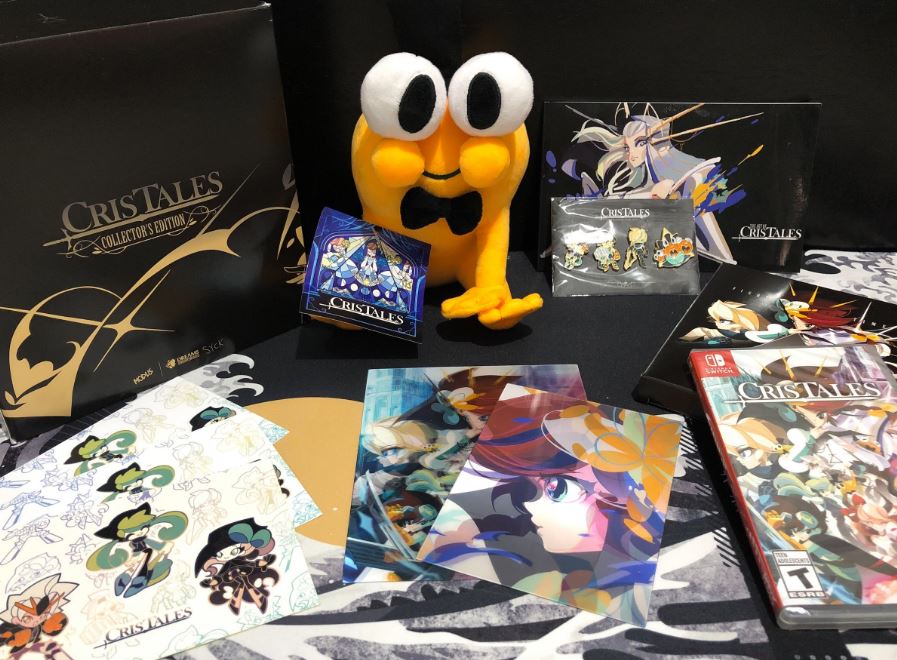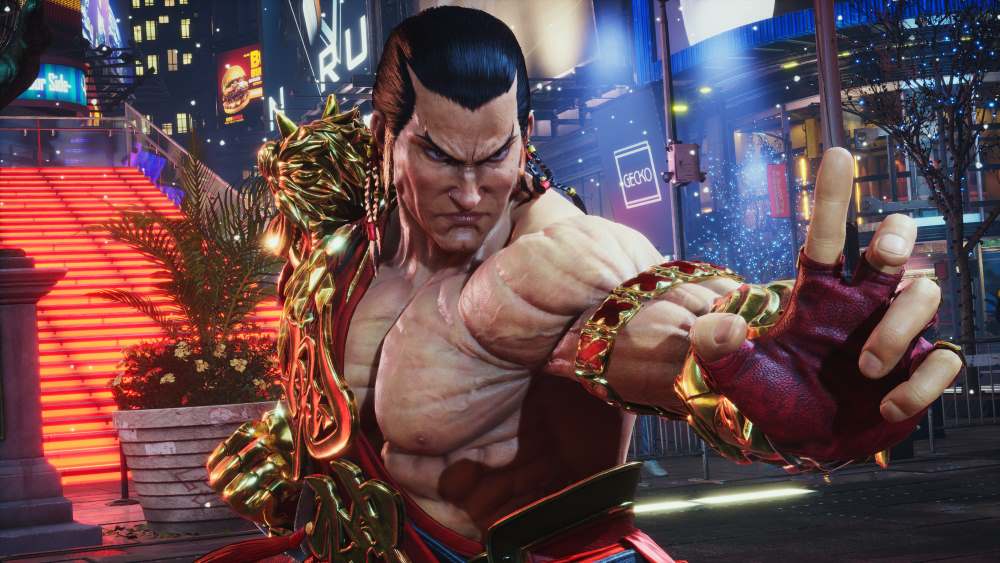Final Fantasy VII Rebirth Dev Team Says Game Will ‘Beat Your Expectations’ in Interview
In case you’ve been living under a rock for the past week, we just got a fresh new look at the highly anticipated Final Fantasy VII Rebirth courtesy of an insanely packed release date trailer that gave us a glimpse of what to expect when the game launches on February 29, 2024.
To dive into more detail, I got the chance to sit down with key members of the Final Fantasy VII Rebirth Development Team, namely Producer Yoshinori Kitase, Director Naoki Hamaguchi, and Creative Director Tetsuya Nomura, as they answered some of the burning questions the Southeast Asian media had for the upcoming title.
*Some parts of this Final Fantasy VII Rebirth interview have been slightly edited for brevity and readability. Some minor spoilers might be included.
Related – Check out the Final Fantasy VII Rebirth Collector’s Edition
Media (M): Final Fantasy VII Rebirth will feature new playable characters like Red XIII and Cait Sith. What can players expect from these additions, and how would they fit into the party, both narratively and gameplay-wise?
Tetsuya Nomura (TN): Red XIII actually first appeared as a guest character in Final Fantasy VII Remake, and he appears again as a fully playable character in Final Fantasy VII Rebirth. In Rebirth, he’ll actually be traveling together with Cloud and his party, and you’ll actually get to visit his hometown of Cosmo Canyon and find out a lot more about his background, his history, and who he is as a character.
In terms of Cait Sith, he did appear for a very short period in the Remake. He’s back now and mainly appears in the Gold Saucer area, where you’ll first encounter him as a sort of fortune-telling robot. People who have played the original FF7 will know that he’s got a big secret, and you’ll get to see that secret and find out who and what he actually is in the story of Final Fantasy VII Rebirth.
Naoki Hamaguchi (NH): On to how they play in battle, obviously, they are very different characters compared to the other party members in Final Fantasy VII Remake. We’ve deliberately set out to make them feel and play differently and have their own battle systems and mechanics.
Red XIII is pretty much a melee-focused, closed-combat character, but he’s not a simple “stand next to the enemy and attack” kind of character. We’ve given him a focus on attack and defense and balancing the two out, and how we’ve done that is that he’s got a unique gauge called the “revenge gauge” that builds up when you block enemy attacks. When you’ve built up that gauge, you can then use it to unleash all kinds of unique abilities – some of which are attacking, others are more defensive or buffing abilities, etc. He’s got a unique playstyle that relies on balancing between attacking with him and guarding the enemy’s blows.
For Cait Sith, obviously, we haven’t shown much of him in battle. If you remember playing the original game, you remember what kind of character Cait Sith was, he had a lot of luck-based elements like the dice attack and things like that. You’ll have to wait for further information to find out about the specifics of what he does in battle, but he’s still going to have that luck-based random element as a strong part of his combat.
M: Final Fantasy VII Rebirth seems to be even more massive based on the latest trailer. Can you share more details about the scope of content that players can expect and also the potential total playtime of Final Fantasy VII Rebirth?
NH: To give you a comparison of the scale of the game compared to Final Fantasy VII Remake, completing the main story and not too much of the side content will take players around 30-35 hours to complete the game. In terms of the main content only in Final Fantasy VII Rebirth, there’s a little more there than in the Remake, so it will probably take most players around 35 to just over 40 hours if you only concentrate on the main storyline. There’s more core story content.
However, one of the big differences between the Remake and Final Fantasy VII Rebirth is that in Final Fantasy VII Rebirth, we’ve got the world map and a huge amount of extra side content that you can play and discover, and I don’t imagine that there’ll be that many players who will try to see absolutely everything and experience all of that in one playthrough.
If there was a player who tried to complete and see everything in Final Fantasy VII Rebirth, it would easily take them over 100 hours to see all of the content.

M: Could you tell us a little story about the development of Final Fantasy VII Rebirth – were there any challenges in developing the game and also the differences between the Remake and Final Fantasy VII Rebirth?
NH: There was a very big change in the overall way that we approached development, in terms of communication specifically, and this was all due to the fact that the effects of the Coronavirus lockdown happened right as we were in the middle of development.
So when we were developing Remake, everyone was in the office together. We all talked face to face. Not all information was shared in face-to-face meetings, but a lot of discussions did happen in that way. Obviously, when we started work on Final Fantasy VII Rebirth, everyone was working remotely and we were communicating with various communication tools. I think the main one we used in development is Slack where we can talk to each other.
There are advantages and disadvantages to using tools and communicating in that manner. I think in terms of the positives, one very good thing was that everyone could get together on the same channels and talk together. Obviously, only the upper-level management guys and sometimes people directly involved in anything at one time would be talking, but everyone else had an awareness of that, so I think that was very different and it was very good because people could pick up on discussions without having to have them told directly and sometimes people from completely unrelated departments would jump on something and come up with a really good idea. So that was a really good positive for that and I think it does fit with a modern development idea and development style.
On the downside, of course, I think the fact that we used Slack and have those channels for everyone made some people a little bit lazy in communication. They felt as if “What if I just throw something on the Slack channel, someone’s gonna pick it up, someone’s gonna run with this.” And sometimes people didn’t, so there were disadvantages too. It was a big challenge but it was a very interesting way to approach and a very new and modern way of developing games.

M: Will there be any update to the battle system and storyline of Final Fantasy VII Rebirth?
NH: The main new addition to the battle system in Final Fantasy VII Rebirth is what we call the synergy system, and I just like to go into how we came up with the idea for that system and how it came to be in the game. It might be a little bit surprising because we didn’t actually start with the intention of looking at the battle system and saying “how do we want to add to or what do we want to change.” The system actually came more from discussions on the story of the game.
If you played the original Final Fantasy VII, you’ll know what we mean here, but the section of the original story that is covered in Final Fantasy VII Rebirth is from when Cloud and the team leave Midgar, through to when they visit The Forgotten Capital and obviously all the very fated, very dramatic events that happened with Aerith.
In the journey between those two locations, you really see the team bonding more. They come together, they learn more about each other and they deepen their bonds of friendship and get to know each other a bit more. So we’ve really felt it would be a good idea to have that kind of narrative element reflected in the battle system as well. It just feels nicer and more holistic for the players if that was reflected somehow, and the answer we came up with was creating this Synergy system where characters combined their attacks together.
To talk more about the philosophy and how we incorporated the synergy system in the game and why it’s the way it is, I need to go back a little bit and talk about the overall philosophy for the battle system in the Remake series. The idea very much is to merge menu/command-based gameplay with action-style gameplay, and every element of the battle system really can be categorized into one of those two roles, whether it’s more of an action element or more of menu-style. That runs through the whole battle system and of course that affects the design of the Synergy system as well where we split the synergy moves that you can do into two specific types.
So you’ve got what’s called Synergy skills and then you’ve got Synergy abilities. The Synergy skills are very much the action side of the gameplay. You can use them quickly and immediately and you don’t need to use ATB charge in order to use those. You can use them quite frequently but they require a bit of player skill, so the player will actually have to interact with those abilities and use an action gameplay style control that depends differently on different abilities what you need to do.
So for example some of them require you to block an enemy attack at just the right pinpoint timing and then you get the special ability. Some of them are charged-based attacks – you hold down the button and you have to wait for the enemy to be in the right position and then unleash the attack. Then others, for example, will involve launching the enemy into the air, which you can then follow up with with an aerial combo. There’s a strong action element to it.
On the other side of things, we’ve got the Synergy abilities which have more to do with the menu/command-based style of gameplay and are a lot more strategic in that sense. So you have a special gauge you need to charge up, the Synergy gauge and you can consume that to use these Synergy abilities. So that’s how we split the Synergy system and it involves both the action side and also the more strategic menu-style gameplay.
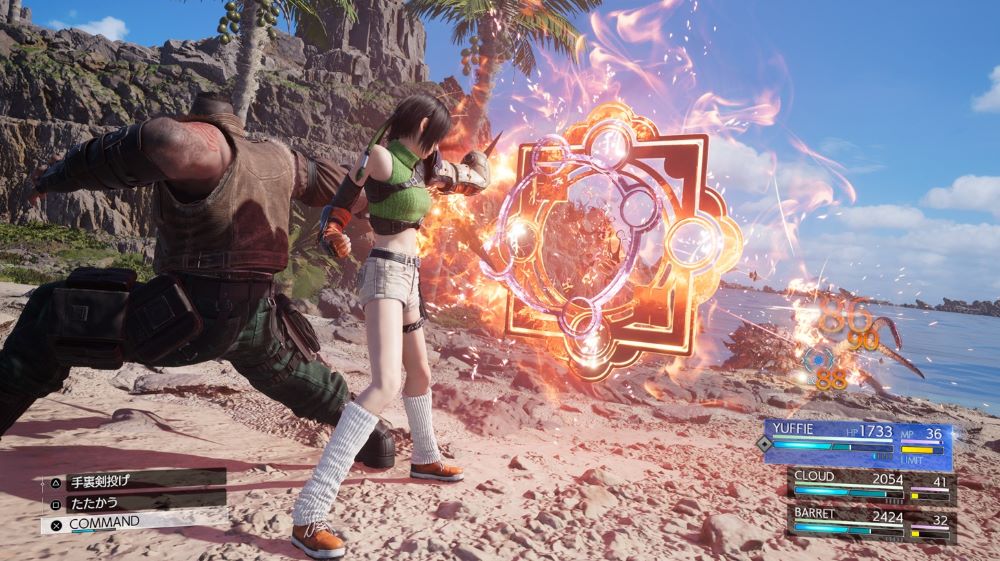
M: It has been revealed that new characters will make an appearance in Final Fantasy VII Rebirth and that consequently means new voice actors as well. In particular, Vincent Valentine sounded a lot like Matt Mercer and the Japanese version sounded like Shogo Suzuki again. Is that something you can confirm and could you give us maybe a little teaser on the other talents joining the cast?
TN: We haven’t announced who the Vincent voice actors are yet. We can only talk about what we’ve announced so far. On the official website, we’ve put up the voice talent for some of the characters, but not all of them yet.
I think the main point that you should notice looking at that is that apart from the Japanese voice actor for Barrett, all of the voice cast are returning from the Final Fantasy VII Remake. Everyone else there, we’ve got to do the same roles again. In terms of Barrett’s Japanese voice actor, he had some personal reasons why he couldn’t continue doing the role, so unfortunately, we’ve had to go with someone else.
But apart from that, it’s all the same people. We haven’t actually announced Vincent’s official voice actors yet so you have to watch out for that later!
M: Does Final Fantasy VII Rebirth Import save files from Remake and Intergrade, and if so, how does Final Fantasy Rebirth deal with character affinity and affection? Is there still a system for that?
NH: We don’t fully carry over save data between the two games, so you won’t be carrying over your character levels, your equipment, or your Materia, and you would have to start from another starting point. The reason for that is something that we decided when we put together the whole plan for the remake trilogy, we want the story links to follow the same characters and the same story between all three of the games, but we wanted to make each game also work as a standalone gameplay experience so the people who want to join the story from partway through could do that without feeling left out.
So you do start again from a different level and have to collect your stuff up again, but an interesting little thing there is that the start level you start at in Final Fantasy VII Rebirth is not zero and it’s not one. It’s based on the level we thought players of the original Final Fantasy 7 Remake would be at at the point when they’ve left Midgar, which is obviously the point in the story when Final Fantasy VII Rebirth starts. So it is aligned in that way, but it’s not a carryover as such.
I just mentioned how you don’t carry over the data wholesale from the previous game, but there is a little bonus there for people who have saved data from Final Fantasy VII Remake or Final Fantasy VII Remake Intergrade on the PS5 already. If you do have that data and you played the original game on the same console, you’ll get a special piece of Summoning Materia from the beginning which is taken from the Final Fantasy VII Remake. There is that little bonus there for players who had the previous game.
Regarding affinity, in terms of the same system we had in the Final Fantasy VII Remake, as I mentioned before, that doesn’t really work with the concept as a standalone, so we didn’t carry over the same parameters and the same numbers from the original game, but there is definitely a similar kind of character affinity level system in Final Fantasy VII Rebirth.
Perhaps one of the scenes that most people really have high expectations for in Final Fantasy VII Rebirth is the Gondola Date Scene at the Gold Saucer. To reflect that and give players what they want, we’ve created another system where all your actions throughout the story, both in the main story and in the side content on the world map, will have a reflection on that and you’ll be able to increase your affinity to different characters. That is finally reflected in the gameplay as well, so if you’re looking for that kind of system, don’t worry, you’ll get exactly what you’re looking for.

M: Final Fantasy VII Rebirth now focuses on exploration of the world map. Can you tell us how the team came up with that direction and idea?
NH: the main reason why we wanted to have that focus on the exploration is because that’s the experience that players had with that same part of the original Final Fantasy VII where we go out onto the world map and you can explore freely around this massive world and feel the scale of the world. In the original game, we had some technical limitations. For example, when you find a town or a dungeon, there is a little icon of that town, you select that icon and then you transfer to a different map because that’s the only way we could do it in those days.
We tried to recreate that in Final Fantasy VII Rebirth by creating one seamless map that contains everything in the world. You’ve got all of the different continents, all of the different towns, the different dungeons, and they’re all part of that same game space and you could travel between them absolutely seamlessly. Again, this all goes back to the idea of recreating the same experience that players of the original Final Fantasy VII had.
If we had done it differently, it would have been easier to develop. We could have a hub portal area where you select a map and you travel to that and then go to a different map, but we thought that approach really wouldn’t give you that feeling of scale of exploring this massive world. In the end, it was a lot harder on the development team and there were a lot more challenges to doing it that way, but we absolutely felt we had to make it in that seamless way in order just to recreate that same fun and that same experience of the original game.
I think a lot of games that have these massive open worlds and let players explore them, there are two different ways they generally approach that. The first type is where you just have the world and you appear in that world and then from the beginning you can go anywhere, you can do anything in any order. The other kind of open-world game, and this is the direction we went in for Final Fantasy VII Rebirth, is you start in a fairly wide area with lots to do but then as the main story progresses and you get more abilities and go different places, then the world expands and you get new areas opening up. Also, at the same time, you can go back to the previous area and there’ll be new content there, a new story that has opened up in that area. That’s very much the approach that we chose for Final Fantasy VII Rebirth.
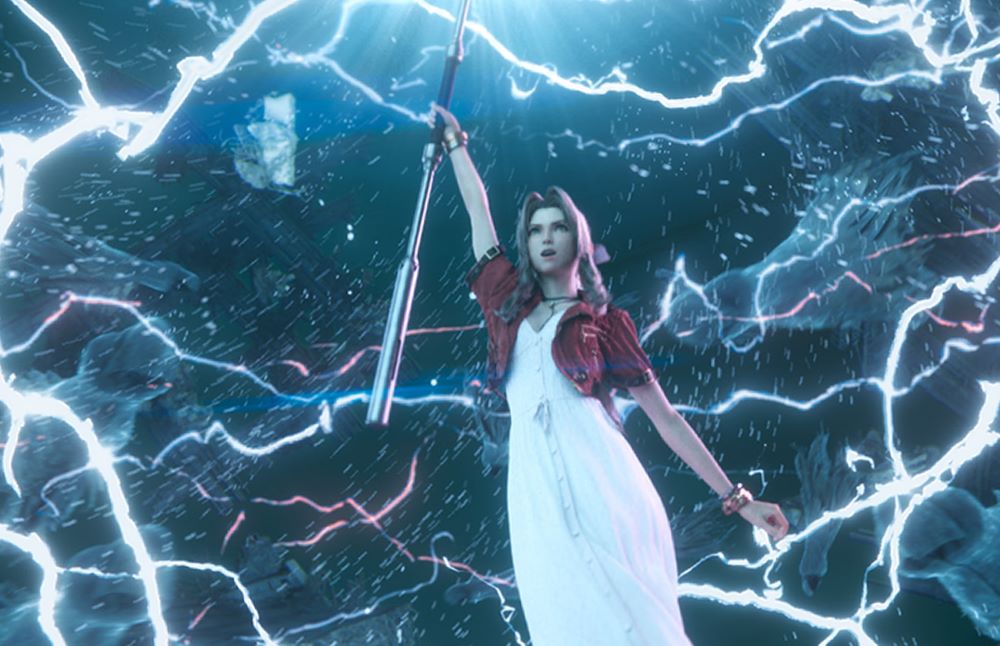
The Final Fantasy VII Rebirth team also shared their closing remarks for fans in Southeast Asia:
Yoshinori Kitase: In terms of the Southeast Asian market, it’s a very, very important market for us here at Square Enix. Certainly, in recent years, the share of the global video games market that Southeast Asia occupies really shot up. I think nowadays it’s even looking comparable to the share in Japan itself, so you are really important to us. We really value your help and commitment.
For Final Fantasy VII Rebirth, I’m really glad that you guys are able to play the game and I’m happy you can enjoy it. In terms of how the game is aimed and presented, it’s designed so you can play the game without starting the original. You can start the series from Final Fantasy VII Rebirth if you want to, and of course, the game contains a movie that covers a digest of all the events in the previous games, so you can get up to speed and understand straight away. It really is designed for both people who are completely new to Final Fantasy VII as well as old fans and people who enjoyed playing Final Fantasy VII for 20 years.
Naoki Hamaguchi: In Final Fantasy VII Remake, I’m sure you’re aware we really focused on that dramatic story-based experience and a lot of players had a lot of fun with that. For Final Fantasy VII Rebirth, we really want to keep that at the core of the game as well. That’s absolutely something we can’t get rid of and we actually got more in terms of story volume, main story, and dramatic story content and it’s done at an even higher quality than the previous game.
The big difference is that we also have at least an equal amount of side content on the world map in Final Fantasy VII Rebirth. You go out and explore and have an amazing amount of fun with lots of different discoveries to make there. So it really is down to the player now – where you want to go and what you want to do at any time. If you want to ignore the main story and go out and delve deeply into the side content, you absolutely can do that. If you want to just concentrate on the main story, you’ve got the ability to do that as well.
That freedom of choice is a big difference, and I think it does lead to a very different kind of game experience, but an equally enjoyable one, so hopefully you can get as many people as possible to play and enjoy Final Fantasy VII Rebirth.
Tetsuya Nomura: There’s a big series out there. It’s not just the main Final Fantasy VII storyline or the original game, but there really are a lot of other games in the Final Fantasy VII universe set before the original Final Fantasy VII story and also set afterward which tell the story after those events. There are a lot of places where people can get involved with Final Fantasy VII.
Final Fantasy VII Rebirth is designed in a way that there’s no problem if it’s your first Final Fantasy game or first Final Fantasy VII game. You can play from Rebirth as well and hopefully, that will get you interested in the world. People who want to know more about the world, this is the first time in the series that the team really goes out into that wider world and they see what’s in that world. I’d imagine there are a lot of people who would play that and get more interest and want to see more about it. You can definitely then use that as a springboard to dive into the older titles and find out more about the world of Final Fantasy VII.
Alternatively, if you’re interested in the developments of the story after those events, you want to see what happens next, then you can go on and play the later games in the Final Fantasy VII series. It’s a great place to start and it really is an entryway into a whole world of the Final Fantasy VII universe.
In terms of people who have played the original Final Fantasy VII Remake and have been really looking forward to Final Fantasy VII Rebirth… First of all, very sorry for keeping you waiting so long to release it, but I’m very confident that Final Fantasy VII Rebirth will beat your expectations. However great you thought it was, it’s going to be better than that, so I hope you can wait a little bit longer and have a really great experience with playing.
Square Enix Team: As for future plans to bring possibly other things to Southeast Asia, nothing has been decided yet. We don’t have any new information about that but we understand that there’s a big demand for the other Final Fantasy VII product. Can’t tell you anything new at the moment, but watch out for that!
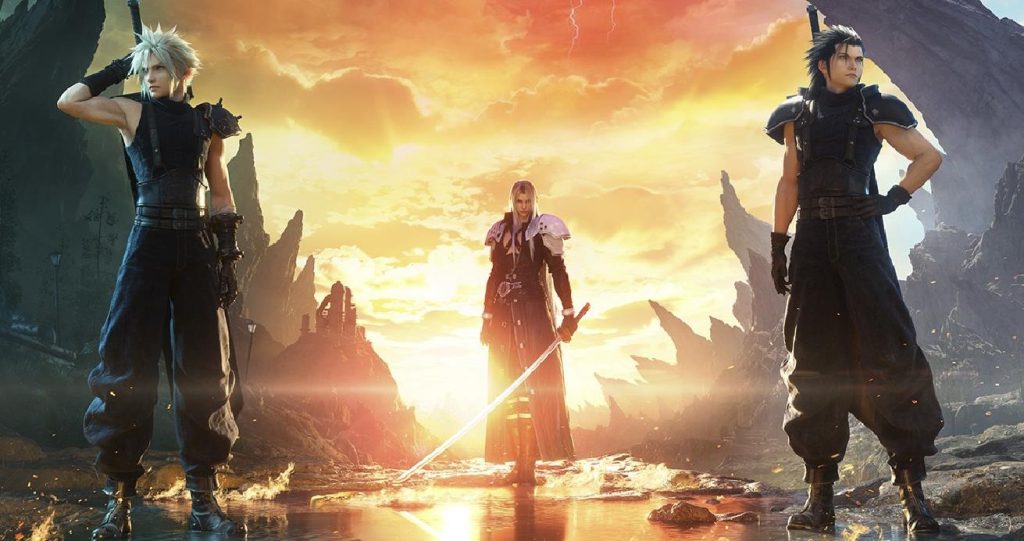
Final Fantasy VII Rebirth is scheduled to launch on February 29, 2024, on PS5.


